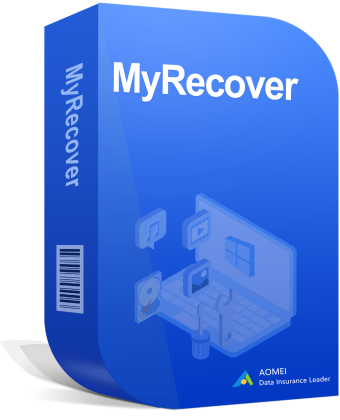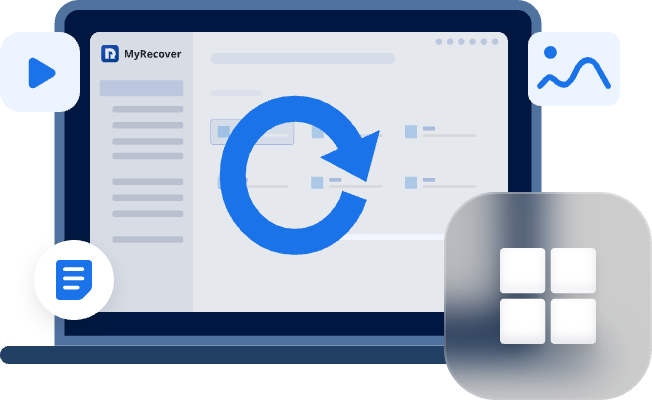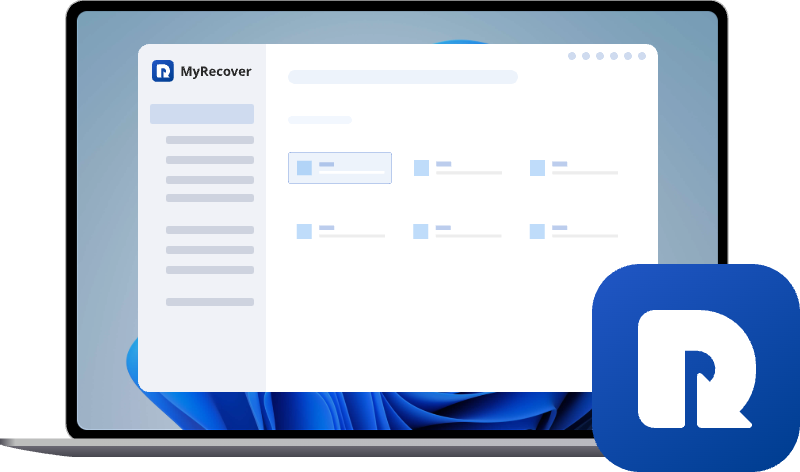Restore an Accidentally Deleted My Documents Folder in Windows 11, 10 & Mac
If you've accidentally deleted my documents folder, immediate action is key. This tutorial provides clear methods for Windows 11, Windows 10 (addressing the documents folder missing windows 10 issue), and MacOS. We'll walk you through all possible options.
How to Recover An Accidentally Deleted Documents Folder on Windows 11?
I accidentally removed my Documents folder in Windows 11. What do I do now?
I don't want OneDrive. I don't want to back up things, so I wanted to remove it completely, but the thing is, the Documents folder, which is a system folder, is in there. So I tried removing it from the OneDrive folder, but I accidentally removed it altogether. I don't have important files there, though, but I want the Documents folder (system file) back. I tried creating one with the same name, but it's just a FILE folder, not a SYSTEM folder. What should I do?
- Question from reddit.com
How to restore the Documents folder in Windows 11, 10, or on a Mac computer after accidentally deleting it? Please don't worry, you can find effective ways to restore the Documents folder and get your files back easily. Let’s find out more details.
How to Recover the Deleted My Documents Folder in Windows & Mac
Try the following solutions to recover your Documents folder on a Windows or Mac computer easily.
Way 1. Use The Key Combination to Restore the Documents Folder
If you use the Delete key to delete your Documents folder to the Recycle Bin just now. You can try Ctrl + Z (Windows), or Command + Z (Mac) to restore Documents to its original location, which undoes the deletion. Give it a shot, then find the result. If it’s not working, try another way.
Way 2. Search Documents Folder
On Windows:
1. Launch File Explorer.
2. Go to the search box at the top-right corner, and input Documents and hit Enter.
3. It will display all the available files and folders related to documents stored on your PC.
4. Once you find the needed Documents folder, right-click on any of them and select Open File Location.
5. Select the folder and move it to its original location.
On Mac:
To find a missing Documents folder on a Mac, you can enable it in Finder Preferences. Use Spotlight search to find the folder itself. Or check the iCloud Drive if Desktop & Documents folders are being synced.
Way 3. Check the Recycle Bin or Trash
When you delete a file or folder in Windows or macOS, it typically isn't immediately erased. Instead, it’s moved to a temporary holding area—the Recycle Bin on Windows or the Trash on Mac. This is your first and easiest line of defense.
Restoring from the Recycle Bin on Windows 11/10
1. Simply double-click the Recycle Bin icon on your desktop.
2. Once it opens, look through the list of files and folders.
3. You can sort by deletion date to find your recently deleted Documents folder more easily.
4. If you spot your Documents folder, right-click on it and select "Restore".
This operation will whisk it back to its original location.
Recovering from Trash on Mac
1. On a Mac, click the Trash icon in your dock.
2. A window will pop up showing all the items you’ve recently deleted.
3. Scroll through to find your Documents folder.
4. Once you’ve found it, you can either right-click on it and select "Put Back" or simply drag and drop the folder onto your desktop.
It will return to its home, and your brief crisis will be over.
Way 4. Recover Documents Folder with Previous Version
Besides, Windows and Mac both provide exclusive features to protect your personal files, File History and Time Machine both can back up your Documents folders and other files to an external hard drive or a network drive. Try to use them to restore the Documents folder easily if you have enabled them before the accidental deletion.
To restore the Documents folder using File History on Windows 11/10:
1. Type "Restore your files with File History" in the Windows search bar to open the tool.
2. Use the left and right arrows to find the backup version containing the Documents folder.
3. Select the Documents folder, then click the green Restore button to put it back in its original location, or right-click the button and choose "Restore to" to pick a new location.
To Restore Files or Folders with Time Machine on Mac
1. Click the Time Machine icon in your menu bar.
2. Choose Browse Time Machine Backups.
3. Go to the folder or location where the item was last saved.
4. Use the timeline on the right or the arrows to find the backup you want to restore from.
5. Select the file or folder you wish to restore.
6. Click the Restore button.
Way 5. Fast Recover Documents Folder with MyRecover
Sometimes, your Documents folder might be permanently deleted due to your deletion method. If these files are important to you, you can use professional data recovery software to recover the Documents folder fast and easily.
To recover the Documents folder faster, here we will show you the best Windows data recovery software - MyRecover, is known for its straightforward design and powerful recovery engine.
- Friendly UI and Deep Scan. MyRecover offers a user-friendly interface and deep-scanning capabilities that can locate files fast, even if the files are permanently deleted.
- Support All Windows Operating Systems. MyRecover allows you to run it on all Windows computers, like Windows 11, 10, 8.1, 8, 7, Vista, XP, and Server 2025, 2022, 2019, 2016, 2012, 2008.
- Easily Recover Deleted Files. You can recover deleted files from an emptied recycle bin, recover files from a formatted SSD, etc.
- Preview Files. You can preview files like photos, videos, documents, and more before recovery to ensure they are intact and the right files.
For the Documents folder recovery, we will provide a detailed, step-by-step guide with MyRecover. Check the simple guide:
1. Please install MyRecover after downloading it on your computer.
2. Tap Deleted Files Recovery, and choose the C drive to scan if your Documents folder was originally located on it, and click the "Scan" button.
3. It will begin a quick scan, and click OK when finished. By default, MyRecover lists all found files by file type.
4. Preview and choose the Documents folder to ensure it’s the right folder, and hit Recover.
5. Opt for a safe location to save the Documents folder, then move it to the original location.
- Tips:✎...
- Once the scan is complete, you can use the search bar to look for "Documents" or browse through the folder tree on the left. You can also filter by file name, size, or modification date to narrow down the results.
- Besides, you can recover files from an unbootable computer as long as you created a Windows bootable media.

- Recover Deleted Files Easily with Simple Clicks
- 1000+ File Formats Supported
- Support HDD, SSD, External Hard Drive, USB Drive, SD Card, etc.
- Quickly Find Files Using File Types, Name, Size, etc.
- Preview Files Before Recovering
- Recover Unlimited Data
How to Restore the Documents Folder to Its Default Location?
Some users might use OneDrive or other cloud storage to back up their personal files, including Documents, or they changed the Documents location before, which is why your Documents folder is missing in Windows 10, 11. If you can’t find your Documents folder, you can restore Documents folder to its default location to make it easy to find.
Here is a concise guide to restore your Documents folder from the OneDrive folder to its default location.
1. Click the OneDrive icon in your system tray, go to Settings > Sync and backup > Manage backup, then turn off the backup for your Documents folder and confirm.
2. Go to C:\Users\[YourUsername] in File Explorer, right-click the Documents folder, and select Properties.
3. Go to the Location tab and click Restore Default, click Apply, and confirm Yes to move all your Documents files to the original default location on your C: drive.
How to Recreate the Documents Folder in Windows 11, 10?
If the files in the Documents folder are not critical, you can recreate a new Documents folder to let it work. Here is how:
1. Create a new Documents folder in File Explorer.
2. Using the Win + R command, type regedit and click OK to open Registry Editor.
3. Go to: HKEY_CURRENT_USER\Software\Microsoft\Windows\CurrentVersion\Explorer\User Shell Folders
4. Find the name and data of the Documents folder, change your customized value to %USERPROFILE%\Documents, and hit OK.
5. Then restart the File Explorer to take effect.
Besides, you may also decide to restore the documents library straightforwardly:
Open File Explorer, click on Libraries on the left pane to open the folder. Right-click the Libraries item on the left and select Restore default libraries.
x
FAQs About Deleted Documents Folder
Q: I permanently deleted my documents folder from the Recycle Bin. Is it gone forever?
A: No, it's likely not gone forever. The data remains on your drive until it's overwritten. Stop using the drive immediately to prevent this, as continued use risks permanent loss. Data recovery software can often retrieve the files.
Q: How does recovery differ for a Mac user?
A: The core rule—stop using the drive—is the same. After checking the Trash, the primary native tool is Time Machine. If no backup exists, Mac-specific software designed for APFS/HFS+ file systems is required, following a similar process to Windows recovery.
Q: Can I recover files from a corrupted or failing hard drive?
A: For logical corruption, software might work. For physical failure (clicking sounds, not detected), immediately power down the drive. DIY attempts can cause irreversible damage. Professional data recovery services in a cleanroom environment are the only safe option, though costly.
Conclusion
Now, you might have restored your Documents folder. To protect all your important files, it’s highly recommended to back up your files. Or your files can only be restored by a professional data recovery software, just like MyRecover.
Besides, you can also recover files from an unbootable computer, recover files from an emptied recycle bin, recover files from a RAW partition, recover files from an NTFS partition, etc.


